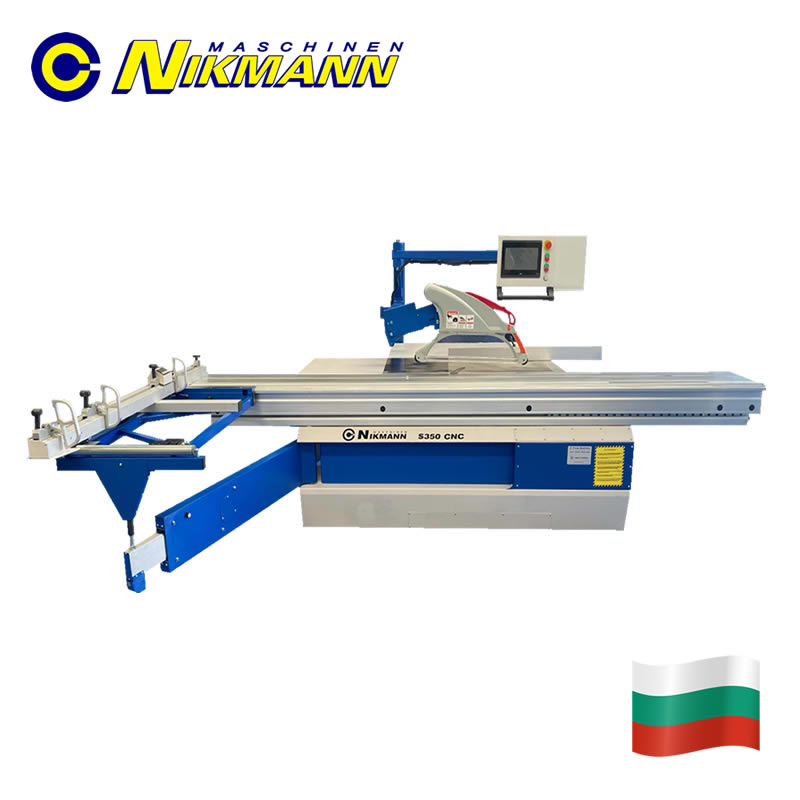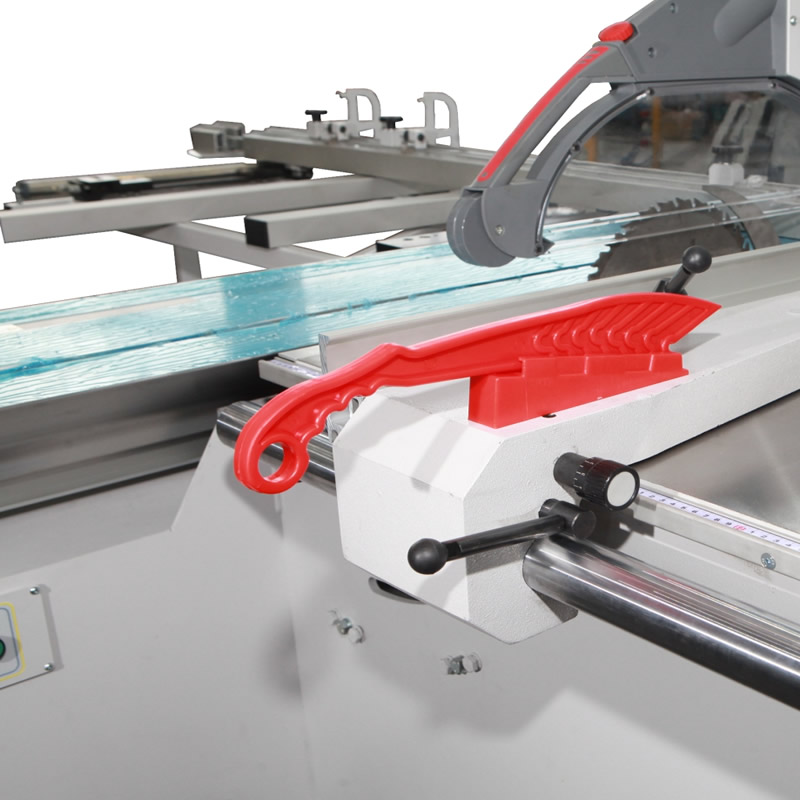Panel Saw Adjustments
Adjusting a panel saw involves ensuring the blade is square to the table, the fence is parallel to the blade, and the sliding table is aligned correctly. This ensures accurate cuts for panel sawing.
Important Considerations:
- ✅ Blade Diameter: Keep in mind that blades have slightly different diameters and should be calibrated after blade changes and sharpening;
- ✅ Adjust Scoring Blades: Adjust the scoring blades until they are aligned with the curve of the cut, using the provided adjustment screws.
- ✅ Test Cuts: Always make test cuts and check for accuracy after adjustments.
- ✅ Regular Maintenance: Regular maintenance and adjustments are crucial for maintaining the panel saw's accuracy.
Precision in woodworking and carpentry defines true craftsmanship. Maintaining your tools—especially your panel saw—in optimal condition is key to achieving consistent accuracy in every project.

For more information, please call: 1300 436 792

FREE CUT on CROSSCUT FENCE
Most customers have no idea what free cut is. They, like most people, assume that the sliding table runs exactly parallel to the sawblade. It does not. The sliding table runs away from the back of the sawblade by a fraction of a millimeter.
All sawblades vibrate to some extent. They flutter less at the front where the cutting teeth are held stable by the material than at the back. If the table is set absolutely parallel to the sawblade, there is the danger that the back teeth will retouch the material and spoil the clean cut achieved by the front teeth. As the back teeth are ascending, there is also the likelihood that they will cause chip out on the top surface of laminated boards.
At the factory, we set the free cut at 0.1 mm between sliding table and rip fence (the sum of the divergence left and right of the blade) measured over the length of the rip fence. When a machine is reassembled at installation, it will not necessarily come together again exactly like it was set up in the factory. As we are talking about differences of around 0.05mm, it only needs a nut to be tightened slightly more or less for a difference to make itself felt.
Adjustment is easy:
- ✅ Loosen the vertical bolt holding the sliding table to the frame at the end you have decided to move (BOLT IN MIDDLE OF SLIDING TABLE - MUST ALSO BE LOOSENED!);
- ✅ Loosen the nuts on the tie bolts at both ends;
- ✅ Adjust using the stop bolt at the end you have loosened;
- ✅ Retighten nuts on tie bolts, vertical bolt and middle bolt;
- ✅ Raise the sawblade to its maximum height;
- ✅ Retighten nuts on tie bolts, vertical bolt and middle bolt;
But without a dial indicator in your pocket, how do you know when the free cut is correct?
You listen to it.
- ✅ Raise the sawblade to its maximum height;
- ✅ Take a workpiece of, say, 600mm long with the cross section, roughly, of a cigarette packet;
- ✅ Lay this up against the crosscut fence and cut. Hold the workpiece firmly after the front teeth have cut and carry on past the back teeth;
- ✅ Listen to the noise from the front teeth and compare with the noise from the back teeth;
- ✅ As the workpiece passes the back teeth, you should feel rather than hear a slight flutter or whisper.
NOTE: If sub rollers are not correctly set, the carriage can be pulled slightly into or away from the sawblade by a roller which is too tight, and the listening test for free cut will give a false result. If squaring accuracy is tested before the free cut is correctly set, too much or too little free cut will also give a false reading.
For more information, please call: 1300 436 792
FREE CUT on PARALLEL FENCE
Most customers do have some understanding of free cut on the rip fence side through their experience with simple table saws.
If the free cut is negative, the workpiece gets stuck between the back teeth and the fence and in the worst case gets kicked back.
What customers rarely notice is too much free cut. They notice "he symptoms but can't identify the cause.
Symptoms such as:
- ✅ Back cutting on the left of the sawblade - workpiece on left is pulled into back teeth. Chip out on top;
- ✅ Scoring saw will not align for use on sliding table side and rip fence side simultaneously;
- ✅ When the rip fence section is in a pulled-back position, the actual width cut will be less than that shown on the scale.

Adjustment is easy:
- ✅ Loosen the nuts on the outside (third) bolt holding the round bar which the rip fence runs on (except with cutting width 800mm where there is no third bolt.) ;
- ✅ Move the bar, and therefore the fence, IN or OUT using the nuts on the second bolt holding the round bar.
Just remember: Crosscut fence and rip fence NEVER been on 90 degrees.
How to judge whether the free cut is correct:
- ✅ Lower scoring saw out of operation;
- ✅ Raise the sawblade to the highest position;
- ✅ Take a workpiece approx. 300 x 450mm;
- ✅ Edge one long side using the sliding table;
- ✅ Cut the opposite long side using the rip fence;
- ✅ Stop the workpiece when the trailing edge is level with the riving knife (and has passed the back teeth);
- ✅ Using the rip fence fine adjustment, move the rip fence 1/4 turn inwards;
- ✅ Pull workpiece backwards to approximately sawblade middle;
- ✅ The back teeth will then cut and where they have cut, the workpiece width will correspond to the distance between back teeth and rip fence;
- ✅ Remove workpiece in the normal cutting direction;
- ✅ Flip the workpiece over so that the trailing edge becomes the leading edge and feed into the sawblade for half the distance which the back teeth have just cut. The width here will correspond to the distance between the front teeth and the rip fence;
- ✅ Between the teeth marks from back and front teeth will be a small ridge. The height of this ridge is the free cut over the length of the sawblade. The ridge should hardly be visible, but just possible to feel.
If you need more information or help, Please call 1300 4 FORZA